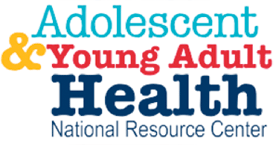Topic :: Program & Policy
-
- This original research article, Improvement in Preventive Care of Young Adults After the Affordable Care Act: The Affordable Care Act Is Helping, by researchers in the Division of Adolescent and Young Adult Medicine investigated how the implementation of the 2010 Affordable Care Act affected young adults’ rates of insurance and receipt of preventive services. Using data Medical Expenditure Panel Survey, the…
-
- Consistent with prior research, a 2014 Research Brief from our partners at Child Trends presented mixed findings on the relationship between state policy and adolescent alcohol use. Higher beer taxes and laws requiring that beer kegs be registered are associated with decreases in adolescent drinking, laws that impose a driver’s license penalty for consumption are associated with higher rates alcohol…
-
- In partnership with NAHIC, researchers at Child Trends used national longitudinal data to examine how high school policies shape substance use in young adulthood. The brief examines several policies, as well as individual, family and peer factors relevant to substance use. Research findings suggest that policies to promote a positive school environment are more likely to influence substance use in…
-
- The past decade has witnessed a tremendous expansion of research and resources on “what works” to improve adolescent health. Despite the greater selection of effective programs and practical tools, this valuable implementation information is difficult to locate in one place. This resource has two aims: To serve as a guide to communities and practitioners for locating effective adolescent health interventions…
-
- Sleep deprivation and noise-induced hearing loss are two critical emerging health issues among adolescents and young adults. Both health concerns have multiple causes and contributing factors. Healthy People 2020, the nation’s public health agenda, has highlighted these two issues as part of its core objectives for adolescent and young adult health, yet little is known about effective ways to prevent each from occurring.…
-
- NAHIC was represented by senior faculty Drs. Claire Brindis and Charles E. Irwin Jr. at the Institute of Medicine (IOM) and National Research Council conference held in Washington, D.C. in May 2013. The focus of the workshop was “Improving the Health, Safety, and Well-Being of Young Adults.” PDF versions of Dr. Brindis’s presentation, “A Changing Landscape: Overview and Cross-Cutting Themes,” and…
-
- This 2014 original article by researchers in the Division of Adolescent and Young Adult Medicine examines young adults’ health care utilization and expenditures prior to the Affordable Care Act. Using data from the 2009 Medical Expenditures Survey, Lau et al found that young adults had significantly lower rates of overall healthcare utilization that other age groups, the lowest rate of…
-
- This report, by NAHIC’s Claire Brindis along with the Mount Sinai Adolescent Health Center and ICF International, highlights key issues with EOBs and sensitive health services, and discusses how these issues are impacted by the Affordable Care Act. It explores a number of strategies to balance the need of confidentiality with patient communication, and provides insights offered through interviews with…
-
- The Affordable Care Act (ACA) expanded health care insurance for many adolescents and young adults. Among the those not covered by the ACA are teens and young adults who are eligible for or have been granted Deferred Action for Childhood Arrivals (DACA). The DACA program provides temporary work authorization and relief from deportation for certain undocumented youth immigrants. Two reports…
-
- This report by NAHIC and Child Trends starts off by describing the prevalence of different chronic conditions in the adolescent population including allergies, obesity, ADHD, asthma, learning disabilities, and more. It then goes on to discuss disparities, trends in chronic condition incidence, special health care needs of adolescents with chronic conditions, and the implications of chronic conditions for adolescents’ families.…
 University of California San Francisco
University of California San Francisco


